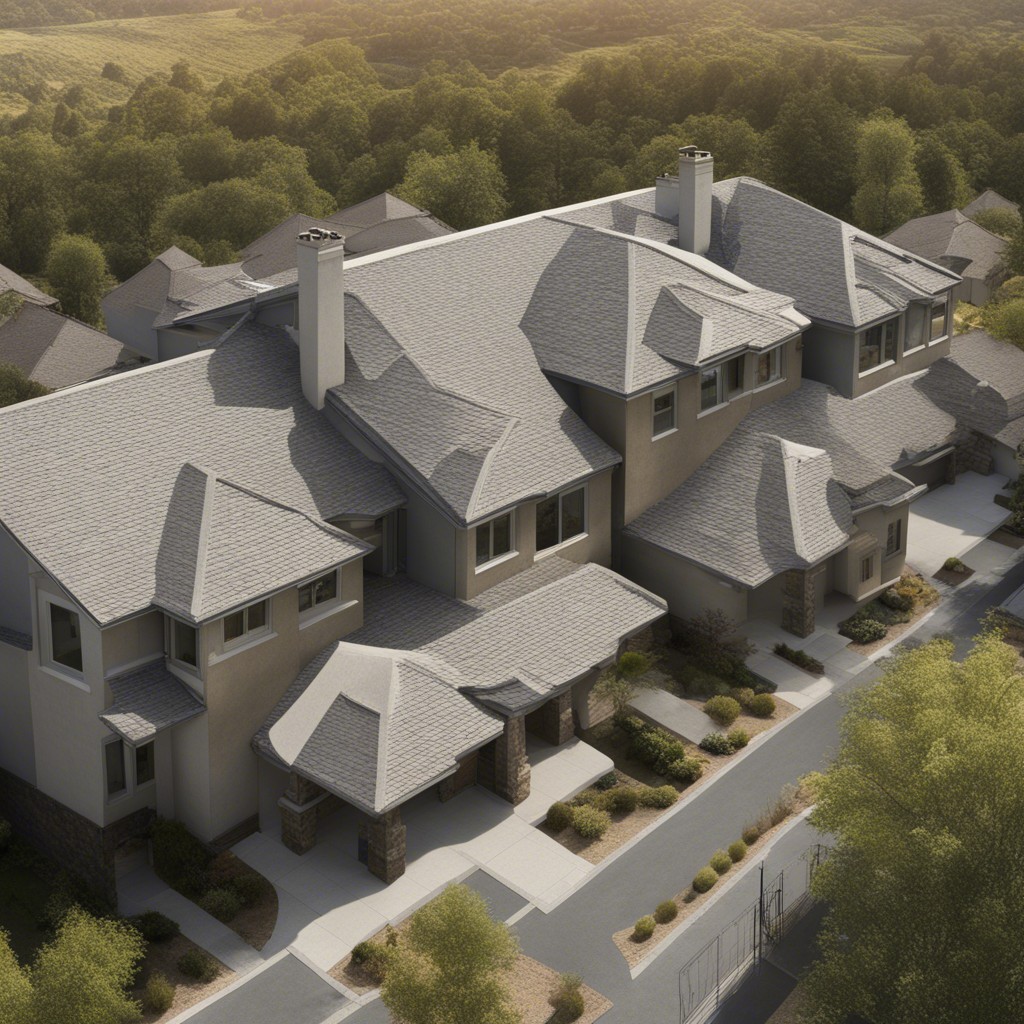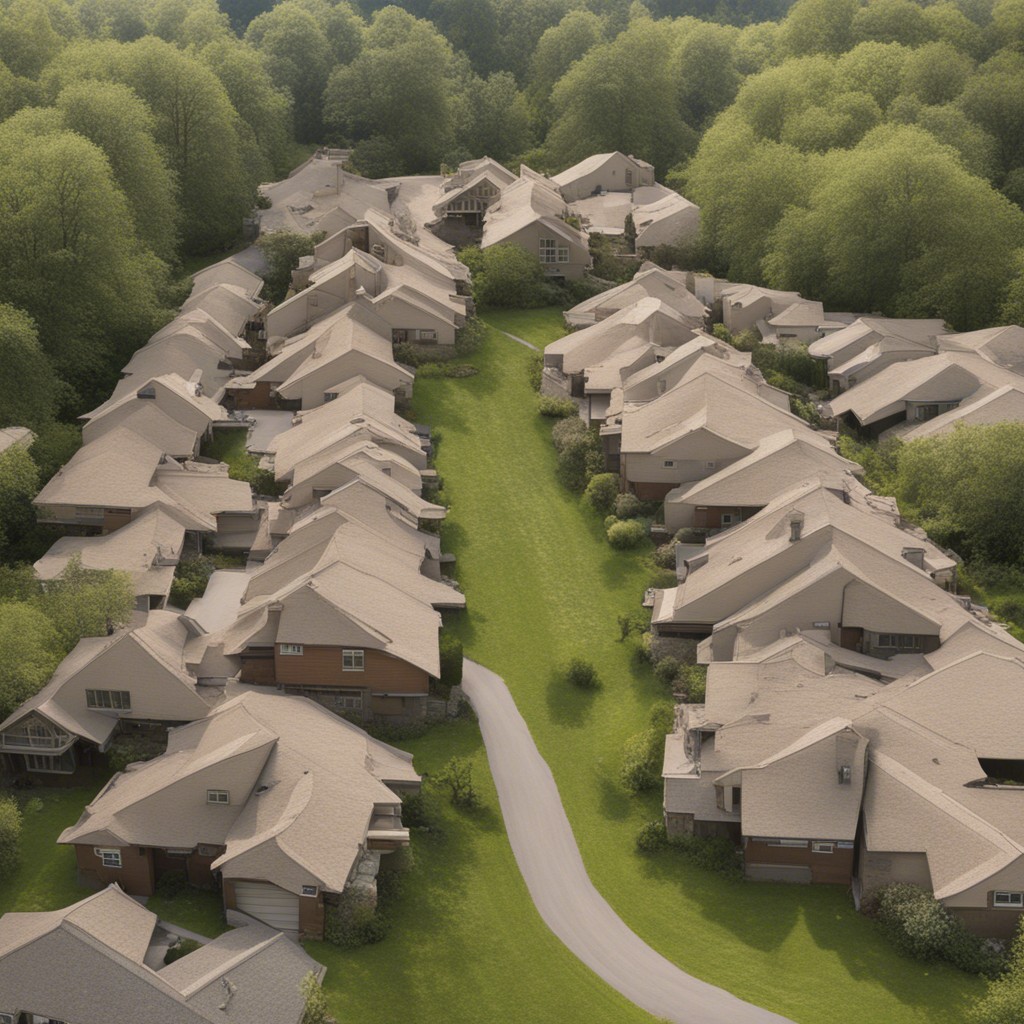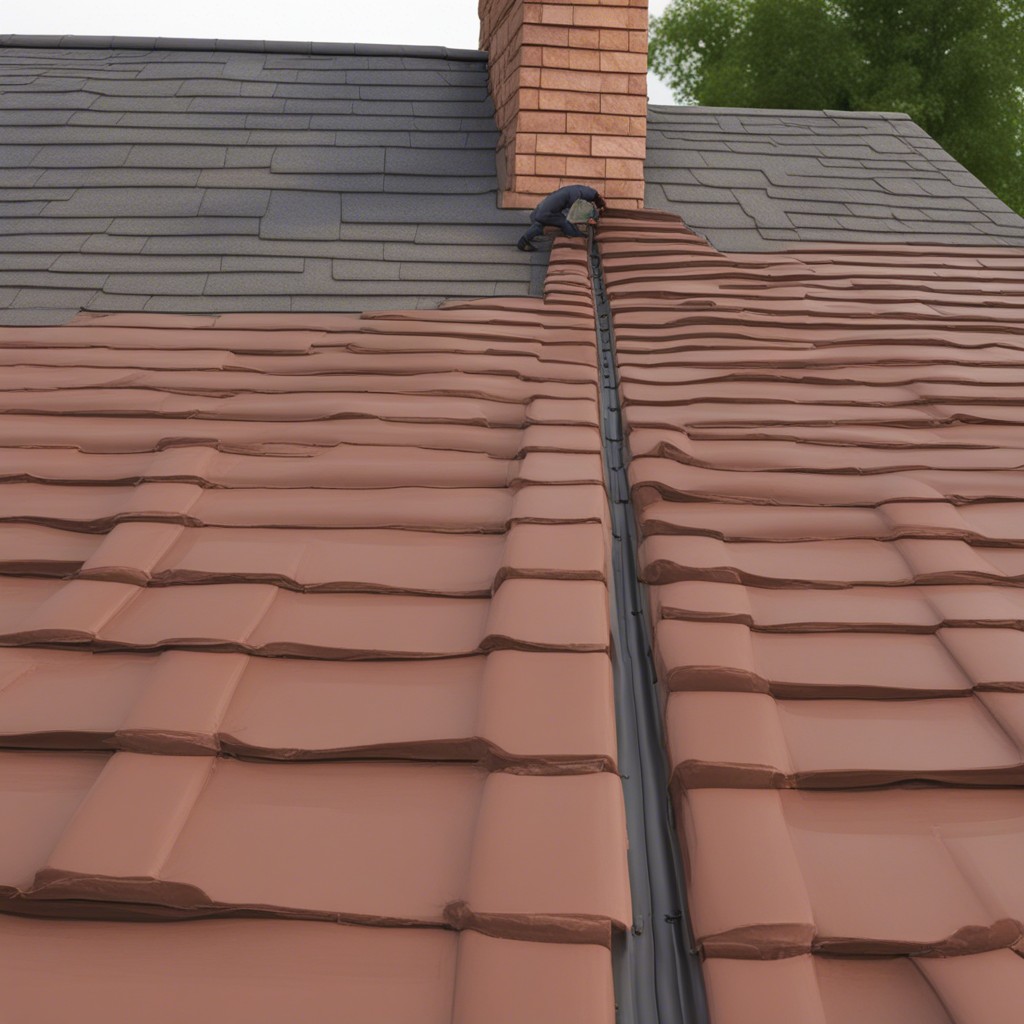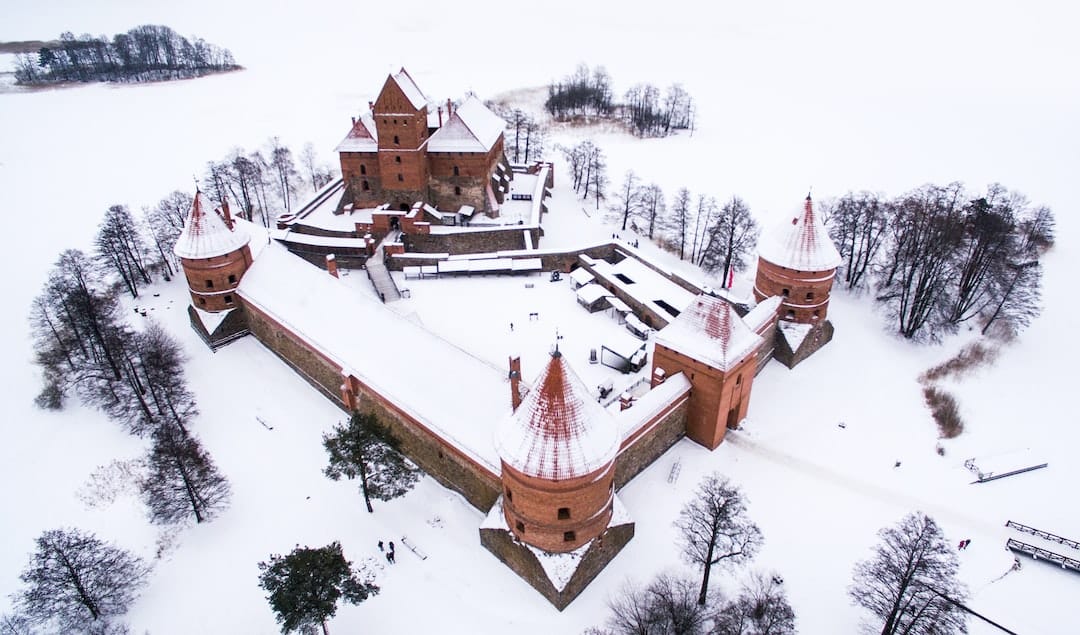Introduction to Roof Valleys
Definition of roof valleys
Roof valleys are the areas where two roof slopes meet and create a trough-like structure. They play a critical role in diverting water away from the roof and preventing leaks. There are two main types of roof valleys: open and closed.
Importance of roof valleys in roofing system
Roof valleys are an essential component of a roofing system. They protect the roof from water damage by channeling rainwater and melting snow away from the roof’s surface. Without proper valleys, water can seep into the roof structure, causing rot, mold, and other structural issues.
Now let’s take a closer look at each type of roof valley:

Open Roof Valleys
Open roof valleys, also known as “California valleys,” are the most common type of roof valley. They have a visible metal or shingle lining in the valley area, which is exposed to the elements. The main advantages of open roof valleys include:
- Performance: Open roof valleys allow for better water flow and drainage, reducing the risk of water pooling and leaks.
- Cost of installation: Open roof valleys are generally less expensive to install compared to closed valleys.
- Aesthetics: Open roof valleys have a cleaner and more modern look, as they expose the metal or shingle lining, which can match the roof’s overall design.
However, there are some considerations to keep in mind with open roof valleys. The exposed metal or shingle lining can be susceptible to wear and damage over time. It may require regular maintenance and inspections to ensure it remains intact and functioning properly.
Closed Roof Valleys
Closed roof valleys, also known as “cut valleys,” are less common but may be recommended by shingle manufacturers for specific roofing products. In a closed valley, the shingles on one side are cut and laid over the shingles on the adjacent side, creating a closed trough-like structure. Here are some key points about closed roof valleys:
- Performance: Closed roof valleys can provide a seamless and watertight surface, as the shingles overlap and create a barrier against water penetration.
- Cost of installation: Closed roof valleys may require more labor and materials, making them potentially more expensive to install compared to open valleys.
- Aesthetics: Closed roof valleys may not have the same clean and modern look as open valleys since the shingles are covered by the overlapping layer.
Closed roof valleys may be a preferred choice in areas with heavy rainfall or climates prone to ice dams. It is essential to follow the manufacturer’s recommendations if they suggest closed valleys for their shingle products. Discussing your options with a professional roofer can help determine the best valley style for your specific roofing needs.
In conclusion, both open and closed roof valleys have their advantages and considerations. Open valleys are generally recommended for their better water flow and durability, while closed valleys may be preferred in specific situations. Regular maintenance and inspections are essential to ensure proper functioning and longevity of roof valleys.
Open Valley
Open valleys are the most common type of roof valley used in residential roofing. They are created by overlapping shingles from both sides of the valley, forming a V-shaped channel that allows water to flow down the roof and into the gutters. The open design of this valley type makes it easier for water to run off the roof and helps prevent water from pooling or getting trapped.
It is important to note that the choice between open and closed valleys often depends on factors such as personal preference, the type of roofing material used, and manufacturer recommendations. Consulting with a professional roofer can help determine the best valley type for your specific roofing needs.
Brava Roof Tile offers a variety of roofing solutions, including roof valleys. Whether you are looking for an open, closed, or woven valley, Brava Roof Tile has options that can complement your roofing project and provide long-lasting performance.
Closed Valley
Closed valleys, also known as cut valleys, are another type of roof valley commonly used in residential roofing. Unlike open valleys where shingles from both sides overlap to create a V-shaped channel, closed valleys use metal or another type of flashing to cover the valley area. This creates a more seamless and continuous appearance on the roof.
In conclusion, the choice between open and closed valleys ultimately depends on personal preference, budget constraints, and the specific requirements of the roofing project. Both options have their own benefits and drawbacks, and consulting with a professional roofer can help determine the most suitable choice for your roof.
Whether you decide on an open or closed valley, Brava Roof Tile offers high-quality roofing solutions that can complement any residential roofing project. With a range of options available, including roof valleys, Brava Roof Tile provides durable and aesthetically pleasing solutions to meet your roofing needs.
California Cut Valley
A California cut valley is a subtype of an open metal valley. It differs from the traditional open valley in that it has a metal flashing down the center, creating a more distinct separation between the shingle layers on either side. This metal flashing is designed to enhance water runoff and prevent any pooling or trapping of water in the valley.
In conclusion, California cut valleys provide an alternative to traditional open valleys, offering enhanced water flow and protection. However, it is important to consider the higher cost and potential maintenance requirements associated with this valley type. Consulting with a professional roofer can help determine if a California cut valley is the right choice for your specific roofing needs. Brava Roof Tile offers a range of roofing solutions, including options for California cut valleys, to meet the needs of your roofing project
Woven Valley
A woven valley is a type of shingle roof valley where the shingles on both planes are woven together through the valley instead of being cut. This technique creates a continuous and seamless look, without the need for additional flashing or metal liners.

In conclusion, woven valleys offer a cost-effective and aesthetically pleasing option for shingle roof valleys. They provide a seamless appearance and reduce the risk of leaks. However, it’s important to consider their compatibility with roofing materials, their performance in heavy rain or snow, and the need for regular maintenance. Consulting with a professional roofer will help determine if a woven valley is the right choice for your specific roofing needs. Brava Roof Tile offers a range of roofing solutions, including options for woven valleys, to meet the requirements of your roofing project.
Half-Hip Valley
A half-hip valley, also known as a clipped-gable valley, is a type of valley that is commonly used in roofing. It is formed when two roof sections meet at a corner, and one section is shorter than the other, creating a triangular shape. This type of valley is often seen on roofs with gable ends.
In conclusion, half-hip valleys offer unique design elements and improved water runoff for roofing projects. However, their installation can be more complex, and they may not be suitable for all architectural styles. Considering the specific requirements and limitations of half-hip valleys, it is recommended to consult with a professional roofer to determine if this valley type is the right choice for your roofing needs.
Bonnet Valley
Bonnet valleys are a type of roof valley that are characterized by their unique shape, resembling a bonnet or hood. They are formed when two roof sections meet at a corner, and one section extends past the other, creating a sloping, curved valley. Bonnet valleys are commonly found on roofs with dormers or other architectural features that require a valley with a more elaborate design.
In conclusion, bonnet valleys offer an elegant and functional solution for roofing projects that require a more elaborate valley design. They provide improved water runoff and enhanced protection for the roof. However, their installation can be more complex, and they may not be compatible with all architectural styles. It is important to consider these factors and consult with a professional roofer to determine if bonnet valleys are the right choice for your roofing needs.
Dormer Valley
A dormer valley is a type of roof valley that is commonly found on roofs with dormers. A dormer is a structural element that protrudes from the sloping roof surface, usually providing additional space or natural light to the interior of the building. The dormer valley is formed when the main roof and the dormer roof intersect, creating a valley-like structure.
In conclusion, dormer valleys offer unique design elements and efficient water runoff for roofing projects. However, their installation can be more complex, and they may require regular maintenance to prevent leaks and debris accumulation. It is recommended to consult with a professional roofer to determine if dormer valleys are suitable for your specific roofing needs and architectural style.
Common Issues and Maintenance of Roof Valleys
Common problems with roof valleys
Roof valleys are susceptible to various issues that can affect their functionality and longevity. Understanding these common problems can help you identify and address them in a timely manner. Here are some of the most frequent issues with roof valleys:
1. Water pooling: Roof valleys can accumulate water if they are not properly sloped or if there are debris blockages. This can lead to water seepage, leaks, and potential damage to the underlying structure.
2. Debris buildup: Leaves, twigs, and other debris can accumulate in roof valleys, obstructing water flow and causing blockages. This can further contribute to water pooling and increase the risk of leaks and water damage.
3. Roof shingle damage: The constant flow of water in roof valleys can wear down the protective layers of shingles, leading to cracks, tears, and detachment. Shingle damage in roof valleys can compromise the overall integrity of the roof.
4. Poor installation: Improper installation of roof valleys can result in a variety of issues, including inadequate sealing, misalignment, or failure to adhere to manufacturer’s guidelines. These installation errors can increase the vulnerability of the roof valleys to leaks and water damage.
Maintenance tips to prevent issues with roof valleys
Regular maintenance and proper care can help prevent problems with roof valleys. Here are some essential maintenance tips to keep your roof valleys in optimal condition:
1. Clean debris regularly: Regularly remove leaves, branches, and other debris from your roof valleys to ensure unobstructed water flow. This can be done using a broom, brush, or by carefully using a leaf blower.
2. Inspect for damage: Conduct regular inspections of your roof valleys to identify any signs of damage, such as cracked or missing shingles, gaps, or signs of water penetration. Promptly address any issues to prevent further damage.
3. Repair and replace damaged shingles: If you notice damaged or missing shingles in your roof valleys, promptly replace or repair them to maintain the integrity of the valleys and prevent water leakage.
4. Ensure proper sealing: If you are installing or repairing roof valleys, make sure they are properly sealed to prevent water seepage. Consult with a professional roofer to ensure proper installation techniques and materials are used.
5. Consider professional maintenance: If you are unsure about how to properly maintain your roof valleys or if you notice significant damage, it is advisable to seek professional assistance. An experienced roofer can provide expert maintenance and repair services to keep your roof valleys in excellent condition.

By addressing and preventing common issues with roof valleys through regular maintenance, you can prolong the lifespan of your roof, prevent water damage, and maintain the overall structural integrity of your home.
Conclusion
Recap of different types of roof valleys
In this article, we have discussed two types of roof valleys: open valleys and closed valleys. Open valleys involve the use of metal flashing, while closed valleys use shingles to create a water-tight seal. We have also explored the pros and cons of dormer valleys, which are commonly found on roofs with dormers.
Choosing the right roof valley for your roofing needs
When it comes to choosing the right roof valley for your roofing needs, there are a few factors to consider.
First, consider the climate and weather conditions in your area. If you experience heavy rainfall or snowfall, it may be beneficial to opt for a closed valley to ensure proper water runoff and minimize the risk of leaks.
Next, consider the architectural style of your building. Certain types of valleys, such as dormer valleys, can add visual interest and enhance the overall design of your roof. However, they may also require more complex installation and regular maintenance.
Lastly, consult with a professional roofer to determine the recommendations of your chosen shingle manufacturer. They may have specific guidelines for the type of valley that is compatible with their product.
In conclusion, the choice between open and closed valleys depends on various factors such as climate, architectural style, and manufacturer recommendations. It is crucial to weigh the advantages and disadvantages of each type and consult with a professional roofer to ensure that you choose the right roof valley for your specific roofing needs.

